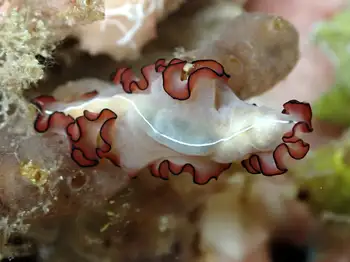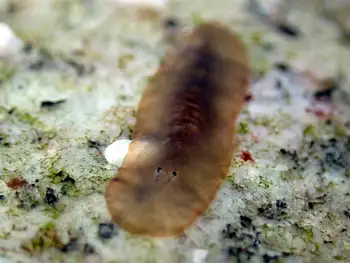Taxonomy
Animalia
Platyhelminthes Rhabditophora Polycladida
Many-branched Rod-bearing Flat-worm Life-possessing-beings
The flatworms, flat worms, Platyhelminthes, or platyhelminths (from the Greek πλατύ, platy, meaning "flat" and ἕλμινς (root: ἑλμινθ-), helminth-, meaning "worm") are a phylum of relatively simple bilaterian, unsegmented, soft-bodied invertebrates. Unlike other bilaterians, they are acoelomates (having no body cavity), and have no specialized circulatory and respiratory organs, which restricts them to having flattened shapes that allow oxygen and nutrients to pass through their bodies by diffusion. The digestive cavity has only one opening for both ingestion (intake of nutrients) and egestion (removal of undigested wastes); as a result, the food cannot be processed continuously.
Platyhelminthes. Retrieved May, 08 2021, from en.wikipedia.org/wiki/Flatworm.
Rhabditophora (from rhabdito-, rhabdite + Greek -φορος [-phoros], bearer, i. e. , "rhabdite bearers") is a class of flatworms. It includes all parasitic flatworms (clade Neodermata) and most free-living species that were previously grouped in the now obsolete class Turbellaria. Therefore, it contains most of the species in the phylum Platyhelminthes, excluding only the catenulids, to which they appear to be the sister group.
Rhabditophora. Retrieved May, 08 2021, from en.wikipedia.org/wiki/Rhabditophora.
The Polycladida represents a highly diverse clade of free-living marine flatworms. They are known from the littoral to the sublittoral zone (extending to the deep hot vents), and many species are common from coral reefs. Only a few species are found in freshwater habitats.
Polycladida. Retrieved May, 08 2021, from en.wikipedia.org/wiki/Polycladida.

